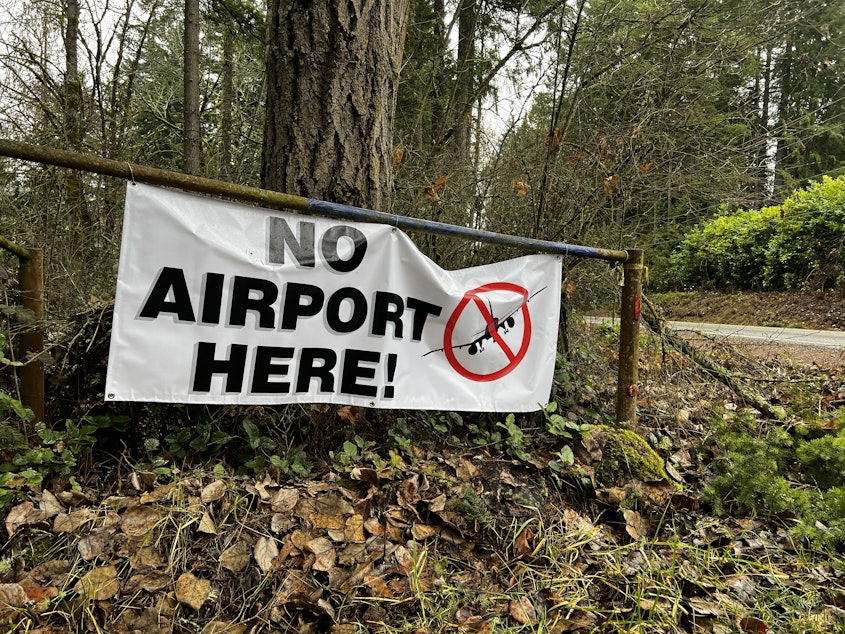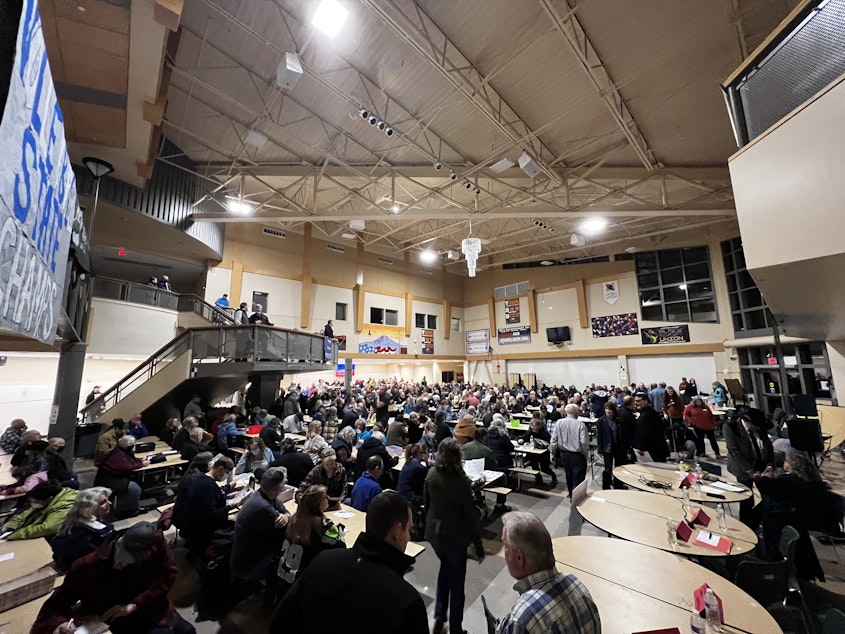Pierce County pushes back on the state's proposed airport sites

Sea-Tac Airport is expected to reach capacity by 2050, meaning there are an expected 27 million passengers who won't be able to fly because supply can’t meet demand.
To solve this looming problem, the Washington Legislature created the Commercial Aviation Coordinating Commission, or CACC, in 2019. The commission is tasked with recommending an ideal location for a new international airport.
In September 2022, commission members whittled down a list of 10 potential locations across Western Washington to just three: two south of Tacoma in Pierce County, and one outside of Olympia in Thurston County.
CACC sees these locations as attractive options because they’re labeled as "greenfield" sites, meaning undeveloped land ideal for more construction.
A new airport would help take on commercial and cargo flights, and without it, the region is estimated to take a $31 billion annual economic impact from the shortfall in service. That means the pressure is on to find a location where a new airport could service the growing urban center of Western Washington.
Over the last three years, five greenfield sites rose to the surface: one in King County, one in Snohomish County, one in Thurston County, and two in Pierce County. The site in King County was ruled out due to restrictions outlined in the 2019 legislation, as was Snohomish County after evaluations began taking place over a potential expansion of Paine Field.
After the announcement of two sites in Pierce County, local residents began to express concern about the suitability of the region.
"There are over 2,500 homes in the designated [central site], and there are over 3,000 homes in the Pierce County East location," said Jake Pool, whose home lies in the center of one of the Pierce County circles.
Sponsored
Pool's property encompasses about 52 acres, and most residents own parcels for farming and agriculture. Even though there are lots of green fields in the area, Pool says that doesn't mean the land isn't being put to use.
"This is the last section of Pierce County that hasn't been developed. A lot of people are putting a lot of time into stewarding the land out here," he said.

The area of the site is six miles in diameter, about 18,000 acres in total. The proposed airport would be built on an estimated 3,100 acres somewhere within that circle. The commission is slated to make a final site recommendation in June.
For months, the Pool family has been planning a town hall in nearby Graham, mustering the area's local opposition to the new airport sites. On either of the gridded country roads are pastures filled with cattle and sheep, lots with homes tucked in stands of forest, and "No airport signs" hitched onto ranch fences and posted on street corners, telephone poles, and front yards.
Sponsored
"Most of the public outrage is the homes of course, but then it's also the fact that this would be such an environmental disaster," said Pool, who works as a horticulturalist with various local environmental programs. "We're sitting on the Pierce County central aquifer. It's a sole source aquifer."
Pool points out threats to regional wildlife species, as well as potential damage to the restoration work done on the Nisqually River, as reasons for local concern.
The Nisqually Indian Tribe has also voiced concern about the impacts of an airport on the Nisqually River.
"Let’s find a place where this airport makes sense," said Chairman Willie Frank III at a Jan. 3 state transportation meeting. "It does not make sense in the Nisqually watershed.”
But it would also mean the potential loss of community support systems, like the Lacamas Community Center.
"That's a place where not only senior citizens, but a lot of young families bring their kids. They play bingo there, they do sewing there, there are multiple 4-H groups that meet there," says Holly Wood, who lives in nearby Roy and helps run the center. "That land was granted there for that community center, and you can't just up and move that."
Wood said nobody from the CACC or the state has spoken with her about what this siting would mean for her.
Sponsored
"If I had to move, I would probably just go out of state," she said. "I hate to say it, I've lived in this same area my whole 57 years."
Grayson Crane, who owns and operates Pink Moon Farm in Eatonville, said the siting experience has caught a lot of residents off guard, especially after a difficult economic situation through the pandemic.
"If either of the Pierce County sites went through, we would have to probably just close and move, or just career change," Crane said.

Around 500 community members attended the town hall at Graham-Kapowsin High School. The opening discussion featured a handful of speakers presenting on the impacts of airports on public and environmental health, as well as potential conflicts with the central site and its border near Joint Base Lewis-McChord.
Sponsored
After that, Rep. Jake Fey, a Democrat from Pierce County and chair of the state Transportation Committee, and Rep. Tom Dent, a Republican from Moses Lake and non-voting member of the CACC, said the pandemic caused mistakes to be made in the current site recommendations.
The two state representatives are working on legislation that would restart the three-year airport siting process.
"We're going to continue to look, but we're going to do it with a different set of parameters, a different set of guidelines in this legislation, and we're going to do it right," Dent said.
Political opposition at the county level is also united.
"All seven members, Republicans and Democrats, signed on a note opposing any airport from being considered," said Shea Johnson, who joined Soundside to discuss his reporting on the subject. "And Pierce County, it may not be often that you see Democrats or Republicans come together as swiftly as they did. But they did."
Hear the full breakdown of the local and legislative battle over the current CACC airport sites by clicking the "play" button on the audio above.
You can see pictures of the Pierce County sites on pages 35 and 36 of the state's report, here.
You can read Shea Johnson's reporting for the Tacoma News Tribune here.





